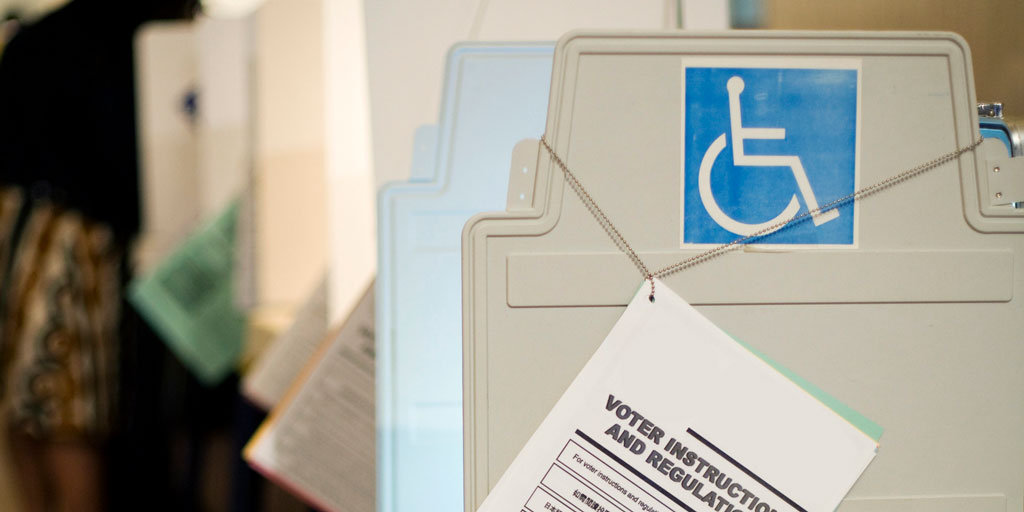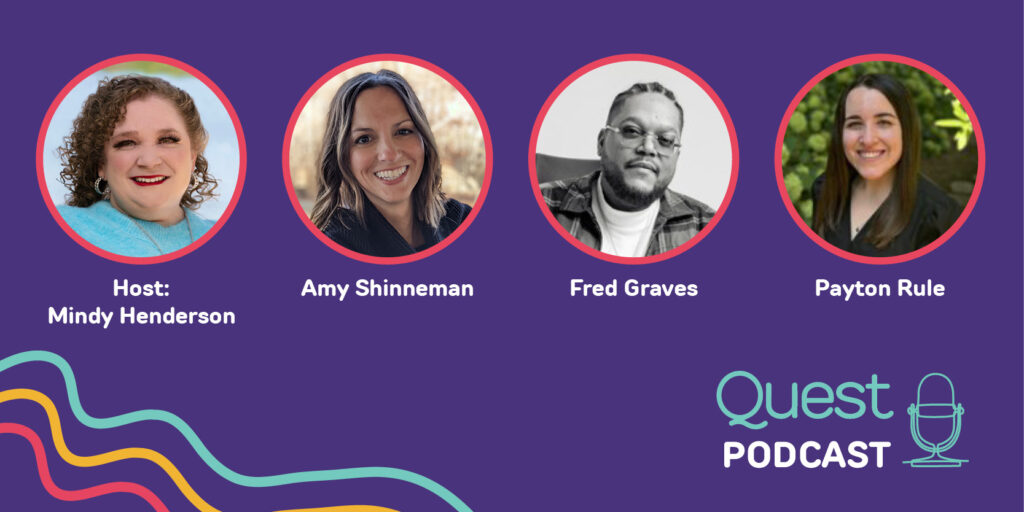
Know Your Voting Rights on Election Day 2020
By Katherine Krieger | Monday, September 28, 2020
Elections are fundamental to a thriving democracy, and it’s vital everyone can exercise their right to vote, including those living with a disability. We know you may have questions about the process — and MDA’s Advocacy Institute has answers to help you make a plan to vote during this election.
Voting is my right, but is it accessible?
Federal law requires that people with disabilities have access to vote on Election Day. Though accessible voting is a right, there may still be barriers to consider before casting a ballot. Planning ahead by following the steps in this guide will help you anticipate practical considerations when going to vote.
How do I register to vote?
Every state has different rules for voter registration. Go to www.vote.gov for information on how to register to vote in your state. Be sure that you follow all the guidelines for your state to ensure that you register with enough notice to cast your ballot in the upcoming election.
How do I find my polling place/voting location?
A variety of voter organizations offer great online resources for locating your polling place. Connecting with your local election officials through the US Vote Foundation or local government websites also will allow you to gain specific information about your local polling options. You can also visit www.vote.org which includes polling locators for all 50 states. Locating your polling place is the first step to form your voting plan.
What are the voting options available to me during this election in the COVID-19 pandemic?
Whether voting by mail, at a curbside, or in person at a designated accessible polling location, your options will depend on your state and locality. To understand the options available to you, reach out to your local election board or state voting office. You can also visit www.healthyvoting.org to find out how to cast your vote in the safest way possible.
What accommodations should I expect at my polling place?
Federal law requires at least one accessible voting system in every in-person voting center. However, we recommend connecting with your local election officials to confirm an accessible polling location in your area. Remember, if your assigned polling location is not accessible, you have the right to be reassigned to an accessible polling place or to be provided an alternative method of voting. There are several ways states work to make voting locations accessible, but these vary between localities, so confirming with your local election officials is important.
How do I know if my polling place is accessible?
Locate your polling place and reach out to your local election officials to ask about accessibility. Identify and request a polling place reassignment if your designated polling place is not accessible. The key is to call ahead. For example, will you need a wheelchair accessible polling location? Reach out to your election officials to ensure your assigned polling place has a ramp or accessible entry.
What do I do if I show up to the polls and there is a barrier? How to I ensure I have access to vote?
If you encounter a barrier when you arrive, talk with a poll worker or election judge present to make accommodations.
How do I get help voting at my polling place?
Poll workers should be trained to assist voters of all abilities on election day. However, this might not be the reality at your polling location. If you know you’ll need assistance, you have the right to bring a friend or family member to help you vote.
Wait, I can bring someone with me to vote?
Yes! The Voting Rights Act of 1964 states that any voter requiring assistance to vote because of a disability will have the ability to bring a person of their choice to assist them in casting their ballot.
If I chose to vote by mail, how can I make sure my mail-in ballot was received?
Many states have online portals where you can check to see if your ballot was received. Visit your state election website for more details. Visit www.vote.gov to find your state election website.
Where can I find general voting information for my state?
We recommend the following two resources for general and accurate voting information.
Recently, MDA sat down with Sen. Bob Casey (Penn.) about accessible voting and what he’s doing in Congress to make voting more accessible for individuals living with disabilities. Watch the video below.
Now it’s time to make your plan to vote! Creating your plan will help ensure that your voice is heard in this election.
- Make sure you’re REGISTERED to vote. Once you know that you are, use the resources in this blog to:
- Decide HOW you will vote — by mail, in person, by dropping your ballot off at the election commission/polling place.
- Decide WHEN you will vote — put it in your calendar!
- Consider whether you need HELP to vote. If you do, considering asking a friend or family member.
- Follow through and CAST YOUR BALLOT!
Disclaimer: No content on this site should ever be used as a substitute for direct medical advice from your doctor or other qualified clinician.




